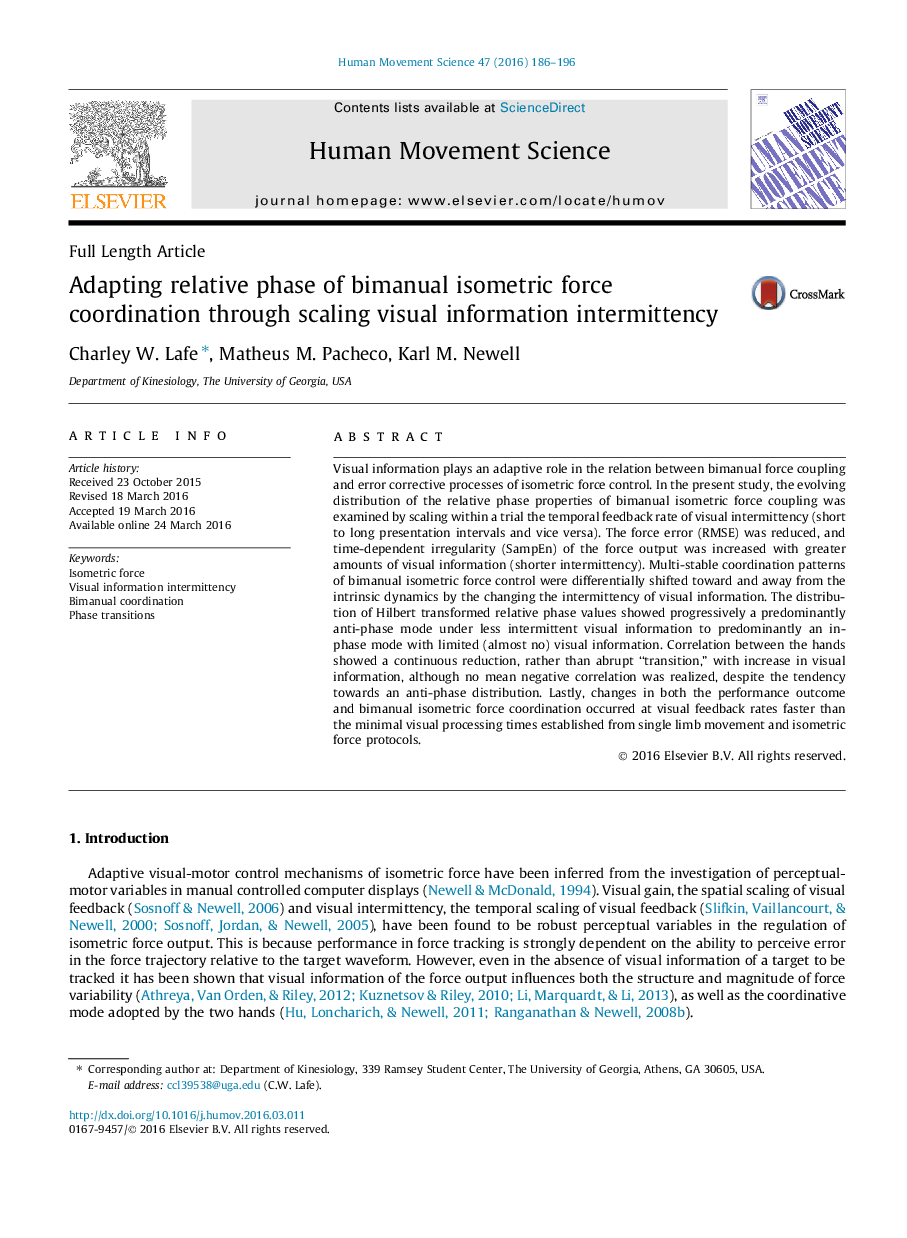| Article ID | Journal | Published Year | Pages | File Type |
|---|---|---|---|---|
| 7291507 | Human Movement Science | 2016 | 11 Pages |
Abstract
Visual information plays an adaptive role in the relation between bimanual force coupling and error corrective processes of isometric force control. In the present study, the evolving distribution of the relative phase properties of bimanual isometric force coupling was examined by scaling within a trial the temporal feedback rate of visual intermittency (short to long presentation intervals and vice versa). The force error (RMSE) was reduced, and time-dependent irregularity (SampEn) of the force output was increased with greater amounts of visual information (shorter intermittency). Multi-stable coordination patterns of bimanual isometric force control were differentially shifted toward and away from the intrinsic dynamics by the changing the intermittency of visual information. The distribution of Hilbert transformed relative phase values showed progressively a predominantly anti-phase mode under less intermittent visual information to predominantly an in-phase mode with limited (almost no) visual information. Correlation between the hands showed a continuous reduction, rather than abrupt “transition,” with increase in visual information, although no mean negative correlation was realized, despite the tendency towards an anti-phase distribution. Lastly, changes in both the performance outcome and bimanual isometric force coordination occurred at visual feedback rates faster than the minimal visual processing times established from single limb movement and isometric force protocols.
Related Topics
Life Sciences
Neuroscience
Cognitive Neuroscience
Authors
Charley W. Lafe, Matheus M. Pacheco, Karl M. Newell,
